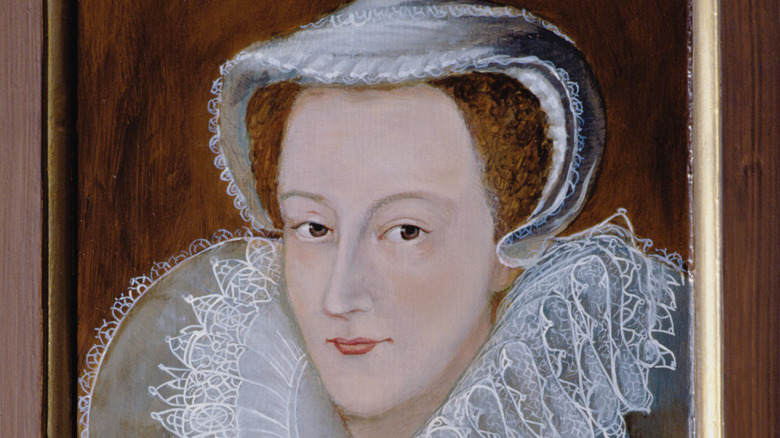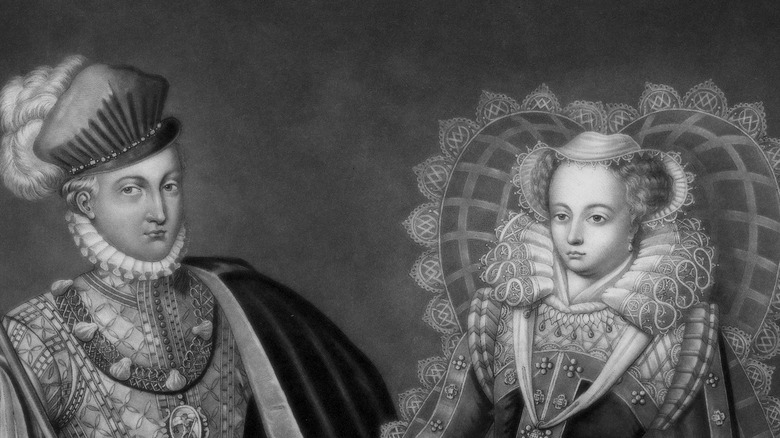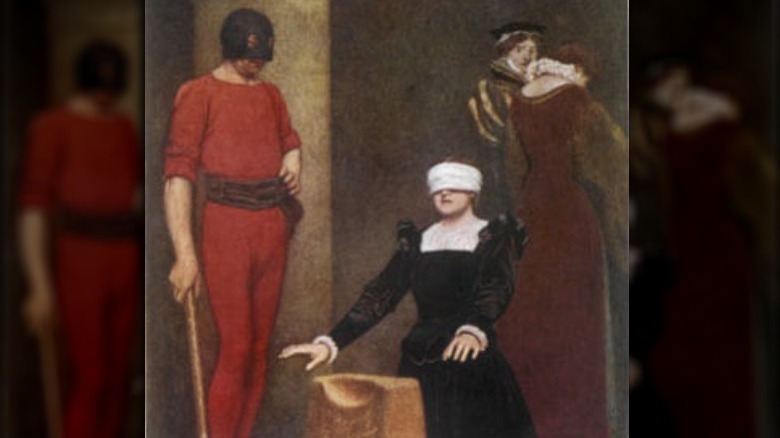The Reason Mary Queen Of Scots Is Considered Unlucky
Born in 1542 and beheaded in 1587, Mary Queen of Scots – Mary Stuart — lived a disastrous, dramatic, and ultimately tragic life. After her father's death, she became the queen of Scotland at only six days old (via Ranker). Beyond this, Mary is well known for her three marriages and the feud between her and her cousin, England's Queen Elizabeth I. Tragedy seemed to mark Mary at every turn, and her life has inspired countless films and TV shows, including 2018's "Mary Queen of Scots" and the series "Reign."
From 1542 until 1567, Mary was queen of Scotland, until her third marriage led to her downfall (via Biography). She was forced to abdicate the throne to her infant son and was imprisoned. Mary then turned her sights to England. As the great granddaughter of King Henry VII, she had a strong claim to the throne, more than her cousin, Queen Elizabeth I. This fact, among other things, would lead to her death at the relatively young age of 44.
In 1558, Mary married the heir to the French throne, Francis II, and became both queen of Scotland and queen consort of France (via Biography). The marriage, although happy, was brief. Francis died only 17 months later from an ear infection, and Mary became a widow at 18. She returned to Scotland and married her second husband and cousin, Henry Stuart, Earl of Darnley.
Her three marriages were tragic
In a word, Darnley (pictured with Mary, above) was ruthless. Darnley became jealous of the relationship between Mary and her secretary, David Rizzio. Darnley had Rizzio murdered in 1566 (via Ranker). A group of men burst into pregnant Mary's apartment and stabbed Rizzio to death while she and her ladies in waiting looked on. When Darnley himself mysteriously died, the finger was pointed at Mary and her alleged lover, the Earl of Bothwell.
Bothwell became her third husband and, arguably, one of her biggest mistakes. Per the Royal Family, their marriage caused her ruin and turned Scottish nobility against her. Bothwell went into exile and Mary was forced to abdicate the throne to her infant son James and was imprisoned in Lochleven Castle. In 1568, Mary escaped Lochleven Castle and raised an army. When she was defeated, she fled to England, where things only got worse for her.
She was imprisoned for 19 years
Mary arrived in England seeking her cousin Elizabeth's protection and help to retake the Scottish throne (via Ranker). Instead, she was held captive for nearly two decades and became a political pawn (via Biography). Sadly, Mary never got to see her son again. English Catholics wanted Mary (who was also Catholic) on the throne instead of Elizabeth. An assassination plot was formed and when Mary was caught corresponding with one of the plotters, she was brought to trial and found guilty of treason. Mary was executed on February 8, 1587 at Fotheringhay Castle in Northamptonshire (via Royal Family). Death did not come easily; the headsman's first blow missed, striking the back of her head. The second struck true, but didn't completely sever her neck. It took a third strike of the axe before she was completely decapitated.
As for her son, James became James VI and inherited the English throne from the childless Elizabeth. According to Historic UK, James reburied Mary at Westminster Abbey in 1612 and moved Elizabeth to a less prominent tomb. Over 400 years after her death, Mary's life, although tragic and untimely, is one that will never be forgotten.


